Thessaloniki gets ready for its metro launch in November
The underground rapid transit lines have been under construction for almost two decades due to various project delays
 TheMayor.EU logo
TheMayor.EU logo 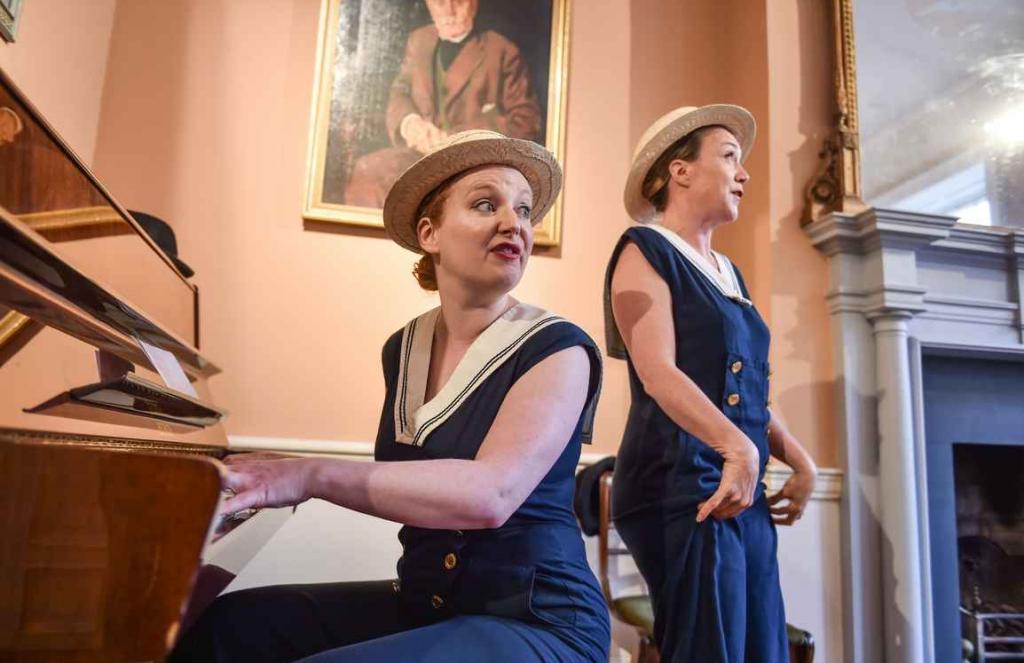
Darina Gallagher, performing songs featured in Ulysses on Bloomsday, 2016, Source: Ruth Medjber, Bloomsday website
A talk with Darina Gallagher, the head of the James Joyce Centre
If you go to Dublin today and by chance decide to visit one of the unlikeliest places – Sandycove, a small suburb in the south bay – you will inevitably find yourself looking upon the Martello Tower, as it has stood virtually unchanged for more than a century.
If you then decide to walk up the winding streets between the one-storey houses with flowers overflowing from their front yards up to the tower itself and look upon the bay, you will see much of what the characters in the first chapter of James Joyce’s Ulysses – Telemachus - saw themselves.
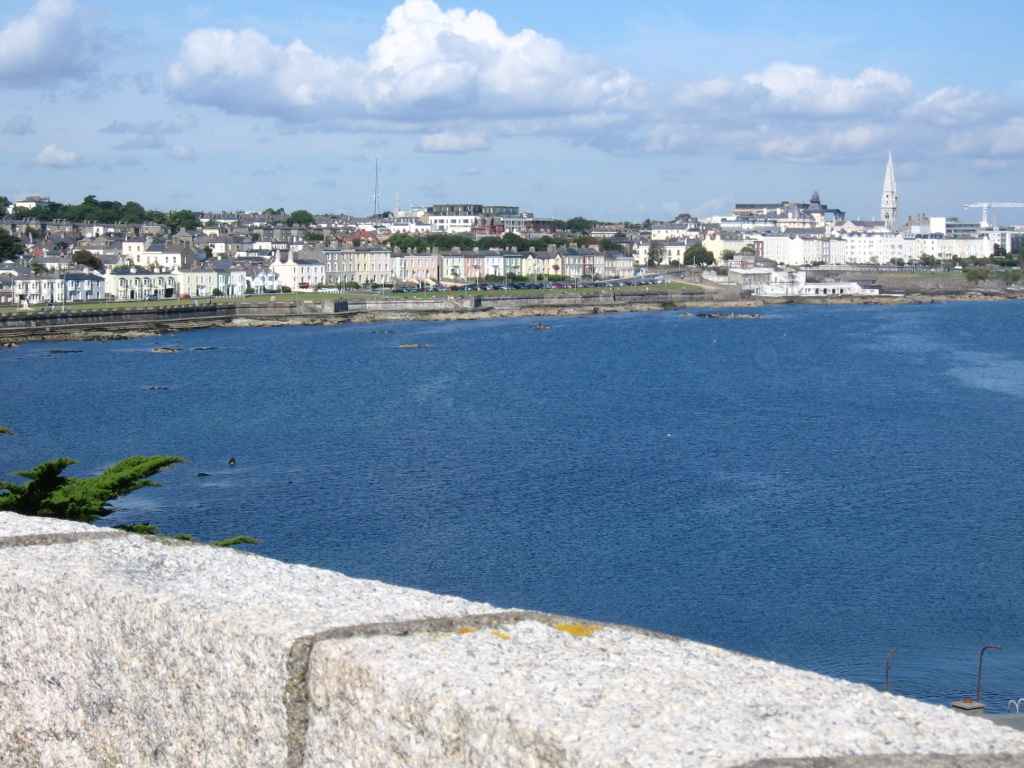
The View from the Martello tower, Source: Eytan6 on Wikipedia, CC BY-SA 3.0
The Martello Tower is far from the only building left from the time the book was written or even conceived as an idea. According to Darina Gallagher, the head of the James Joyce Centre, the street layout of Dublin is much the same and so is the view, to some extent.
 Darina Gallagher, Head of the James Joyce Centre
Darina Gallagher, Head of the James Joyce Centre
Source: Darina Gallagher
In fact, she goes a step further, as she says that ‘Ulysses’ and the legacy of Joyce’s work helped to preserve the city’s Georgian architecture and landscape. This was, in her opinion, a crucial argument in the 1970s and 1980s, when Dublin was going through a redevelopment phase.
The very building housing the James Joyce Centre, Number 35 on North George’s Street was spared demolition by its link to the book and its history. The building was saved by Irish Senator David Norris in ’82, who lived on the same street, with the event credited as stopping the demolition of the entire street.
Both these examples highlight the relationship ‘Ulysses’ has with Dublin. Both city and book have had a profound influence on each other, the literature feeding off the urban landscape and the people, and Dublin finding a piece of its character captured amidst the pages.
James Joyce’s seminal novel ‘Ulysses’ has, without a doubt, frightened many readers for the past century with its sheer volume and density. Despite its quite literal weight with close to 1,000 pages, jam-packed with obscure references to classical literature and Irish jigs from the turn of the 20th century, ‘Ulysses’ also serves as a challenge to the more traditional takes on what Ireland is.
The book was published in 1922, which is the same year that the Irish Free State was declared, with both reaching the ripe old age of a hundred this year. And this coincidence further deepens ‘Ulysses’ complex relationship with Ireland. According to Darina Gallagher, it has taken Irish society 100 years to ponder the themes it lays out.
Despite the length, ‘Ulysses’ takes place on one day, 16 June 1904, and tells the story of one Leopold Bloom, as he travels Dublin and goes about his business, attending a funeral, buying soap, going to the library, walking by the beach, going to the pub and stressing about his wife, who is having an affair.
The book is quite modern, both in its subject matter and in its composition – every chapter of ‘Ulysses’ is written in a different style. It is also considered a jumping-off point for modernist literature in a global sense. And, despite Joyce’s support of the Irish independence movement, most prominent during his time in Trieste, the book almost goes out of its way to challenge aesthetic norms on the island.
'Ulysses' was not well received in Ireland. According to Ms Gallagher, it was never outright banned, but it did cause his family a great deal of embarrassment and shame, as it was seen as obscene. She explained that the Irish thought it filthy. Yet ‘Ulysses’ itself is nothing if not an homage to the Irish capital, with the author going as far as claiming that if the city was to suddenly disappear, it could be reconstructed from his work.
Joyce thought of Dublin in its many historic iterations, first as a Viking settlement, then came the Normans perhaps, then the English, but really, he thought of the city as a mixture of all these things. And he saw himself as this consummate European, completely cosmopolitan. Thus, after 1904, he left Ireland and spent the rest of his life in the great cities of Europe, like Zurich, Paris and Trieste.
Reportedly, he had a problem with the Irish language and certain type of nationalism, as Darina Gallagher describes it: “Language wasn’t a problem for him to learn, he learned Danish for fun at age 18. But at that time in Dublin, he felt that the conspicuous nationalism annoyed him. People speaking Irish loudly, so you could hear it or people putting on plays about our mythical heroic past. I think Joyce wanted to talk about all of us now, with our real problems, rather than fantasy.”
She also said that people often ask her why the book is still important today to which she replies: “I think part of it is those questions because he is challenging us. From the perspective of Ireland. Because it has taken us so long to think about all that ‘Ulysses’ is asking us to think about. Our relationship with the church, with authority, how people just interact with each other, gender, politics, things we are only just beginning to consider and reflect on.”
Dublin, at the turn of the century, was a place of great tribulation, with Irish nationalism beginning to take root and modernity banging on the door. At the same time, much of the city was built and designed in the 18th century and it features a lot of preserved public and private buildings built in the Georgian style – named after the line of British Kings named George, from 1714 to 1830.
Much of the multi-storey housing in Dublin was built by English high society in that period and it represents a very prominent colonial thumbprint the British left on the city. At the same time, around the middle of the 19th century, Dublin was left to deliberately decline and much of those once prominent buildings became tenements – slums really. They lacked sanitation and offered people egregious living conditions.
At the peak of the tenement period around the First World War, approximately 20,000 families (perhaps a third of the city’s population) were living in single rooms. Also, these were not small families, as it was common for people to have around 10 or more children at the time. Dublin’s tenements contained some of the worst urban poverty and child mortality rates to be found in Europe.
This history is embodied quite literally on North George’s Street. The building housing the James Joyce Centre was built in 1784 for Valentine Brown, the Earl of Kenmare, an Anglo-Irish aristocrat. Later, in the 19th century, it turned into a tenement house, along with the rest of the street. During Joyce’s time, the building of James Joyce Centre housed a dance academy, run by Prof. Denis J. Maginni, a colourful Dublin character, who was featured in the ‘Wandering Rocks’ episode in the book.
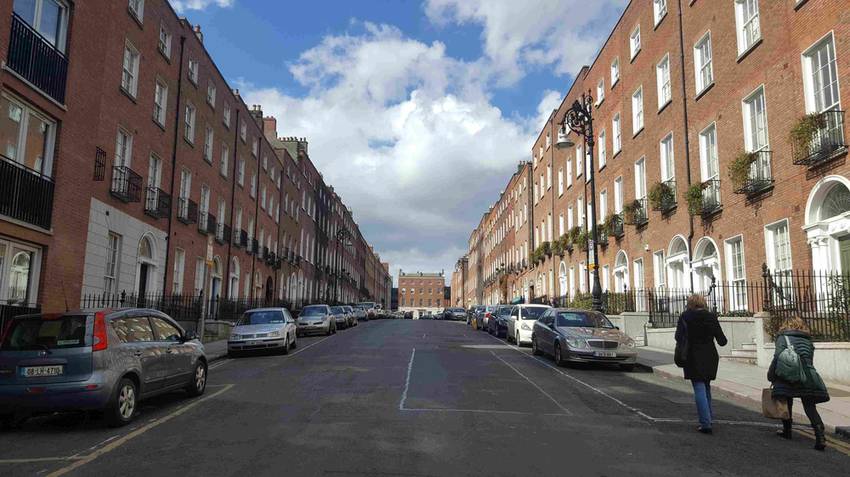 North George's Street, Dublin,
North George's Street, Dublin,
Source: Andrea favia on Wikipedia, CC BY-SA 4.0
In the 1900s, the city was messy, it had a confused relationship with its past and it was bubbling with energy for the future. And Joyce loved it. In a letter to a friend, he explained that many great European cities like Paris and London have been elevated by literature and this is one of the things he set out to do with ‘Ulysses’.
As Ms Gallagher puts it, Ireland had a hard time facing its complex history, embodied in architecture and this is what spurred on the wave of demolition in the ‘70s and ‘80s. Joyce, however, embraced it fully and to a certain extent, thanks to the literal and metaphorical weight of his book, the city also did.
Around 40 years ago, authorities in Ireland were trying to reinvent the country as this new and modern place. They wanted to get rid of a lot of these older buildings, a lot of them were in disrepair and they represented this complex past of colonialism and extreme poverty. In some ways, though, to a lesser extent, this move is still going on today.
Ms Gallagher says: “When I was younger I was thinking: Oh my god, this country is terrible, it just knocks down beautiful buildings. And as I understand my history more, I understand it wasn’t as simple as that. Years ago it was too hard for us to have these symbols. I think we are growing up and we are starting to realise that total rejection of who we are is not possible, actually.”
In 1982, the building of the James Joyce Centre was owned by Dublin City Council and they wanted to demolish it. They had already demolished the row of buildings on its side of the street up to it. Then Senator David Norris, a Joycean scholar who lived on North George’s managed to stop the demolition and save the rest of the street. The gap left by the wrecking crew was later built up with new buildings that look Georgian.
The building of the James Joyce Centre was then renovated and the centre opened in 1996. Darina Gallagher explains that that was quite unusual for the time, as Dublin did not have a commemorative space for Joyce. She says that in a way that helped spark this interest in preserving some of Dublin’s old buildings, although it was not the only factor and the battle for Joycean architectural memorabilia is not over by any stretch.
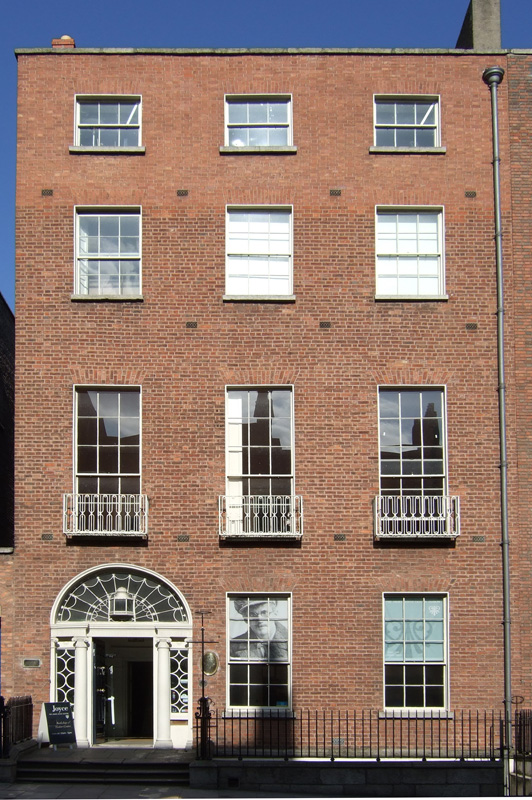 The James Joyce Centre, Dublin, Source: Pointillist on Wikipedia, Public Domain
The James Joyce Centre, Dublin, Source: Pointillist on Wikipedia, Public Domain
Yet, when it comes to locations from the book, many buildings are still standing today, virtually unchanged. Ms Gallagher explained: “In some places, you have to work a bit more to imagine what the city was like, and other places are exactly the same.” This creates a very unique experience of both the city and the book, as people, in real life, can visit these literary, fictional spaces that function quite normally in everyday Dublin and are quite indistinguishable from the rest of the city. In fact, they are as much a natural part of it as any other space. She continued by explaining: “It is just so sad that these amazing spaces have been treated so badly in the recent 10-15 years. It is kind of shocking and embarrassing for the city.”
Some of the more notable examples include Mr Sweny’s Pharmacy, a space recreated by Joyce enthusiasts, in the place of the old pharmacy mentioned in the book, where you can today, buy the infamous lemon soap Leopold Bloom gets. They also include Davy Byrnes’ pub, a very real and very much functioning establishment, where Blooms eats his gorgonzola sandwich.
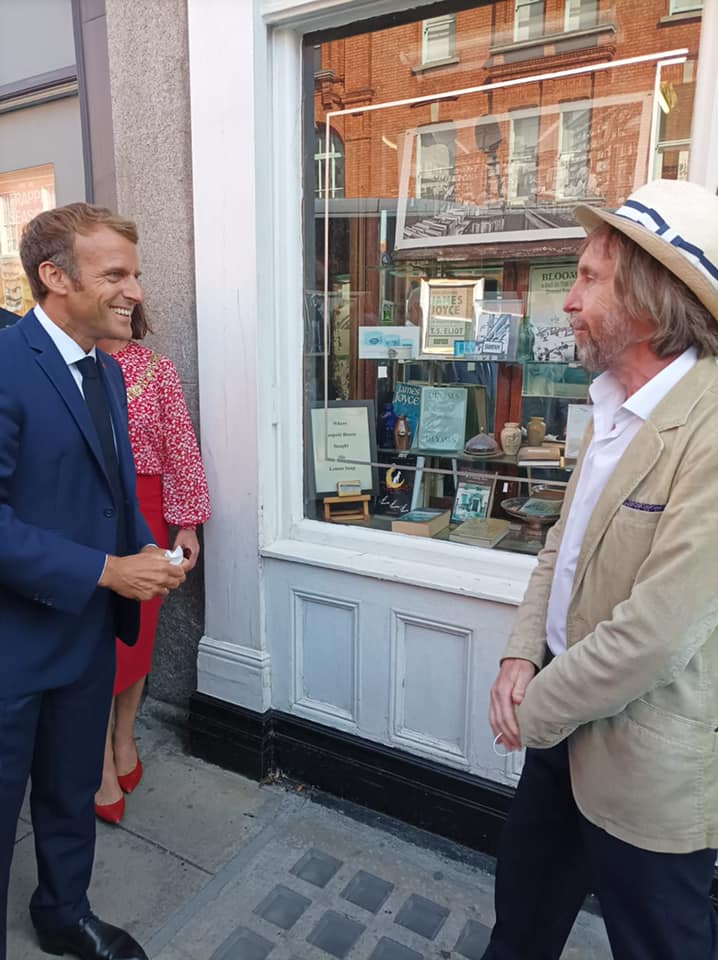 French President Emmanuel Macron visiting Sweny's Pharmacy in August 2021,
French President Emmanuel Macron visiting Sweny's Pharmacy in August 2021,
Source: Sweeny's pharmacy on Facebook
Quite uniquely, James Joyce’s work has manifested itself in the real world, through a strong relationship with the readers. ‘Ulysses’, which is able to contain so much in its pages, seems to persuade people to go out and relive it. And it is amazing that people can do that, all it takes is a walk around the old streets of Dublin.
The book itself has this quality of not wanting to remain on the page. It has spurred countless people to get involved in making the fictional ‘Ulysses’ experience real. This includes people participating in Bloomsday, making performances, music albums, discussions, biking societies or fighting to preserve parts of Dublin.
Ms Gallagher explained that sometimes she gets frustrated that the book and the author are being used as a tourist commodity, but at the same time, this helps to preserve an important part of Ireland’s cultural heritage. “I think Joyce does that in a really special way because it is such an homage to the city, such a celebration of the city, its people.”
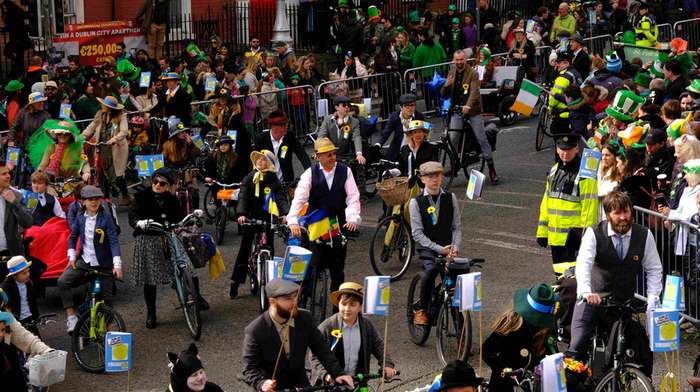
The James Joyce Cycling Community in Dublin, St Patrick's Day parade, 2022,
Source: Denis Balgaranov, TheMayor.EU

The underground rapid transit lines have been under construction for almost two decades due to various project delays

Now you can get your wine in Talence by paying directly in Bitcoin

That’s because the state has to spend money on updating the railway infrastructure rather than subsidizing the cost of the popular pass

Rethinking renewable energy sources for the urban landscape

The examples, compiled by Beyond Fossil Fuels, can inform and inspire communities and entrepreneurs that still feel trepidation at the prospect of energy transition

Now you can get your wine in Talence by paying directly in Bitcoin

The 10th European Conference on Sustainable Cities and Towns (ESCT) sets the stage for stronger cooperation between the EU, national and local level to fast track Europe's transition to climate neutrality.

At least, that’s the promise made by the mayor of Paris, Anne Hidalgo

The underground rapid transit lines have been under construction for almost two decades due to various project delays

At least, that’s the promise made by the mayor of Paris, Anne Hidalgo

Hostal de Pinós is located in the geographical centre of the autonomous region

Despite its church-y name, the district has long been known as the hangout spot for the artsy crowds

Urban dwellers across the EU are having a say in making their surroundings friendlier to people and the environment.

Forests in the EU can help green the European construction industry and bolster a continent-wide push for architectural improvements.

Apply by 10 November and do your part for the transformation of European public spaces

An interview with the Mayor of a Polish city that seeks to reinvent itself

An interview with the newly elected ICLEI President and Mayor of Malmö

A conversation with the Mayor of Lisbon about the spirit and dimensions of innovation present in the Portuguese capital














